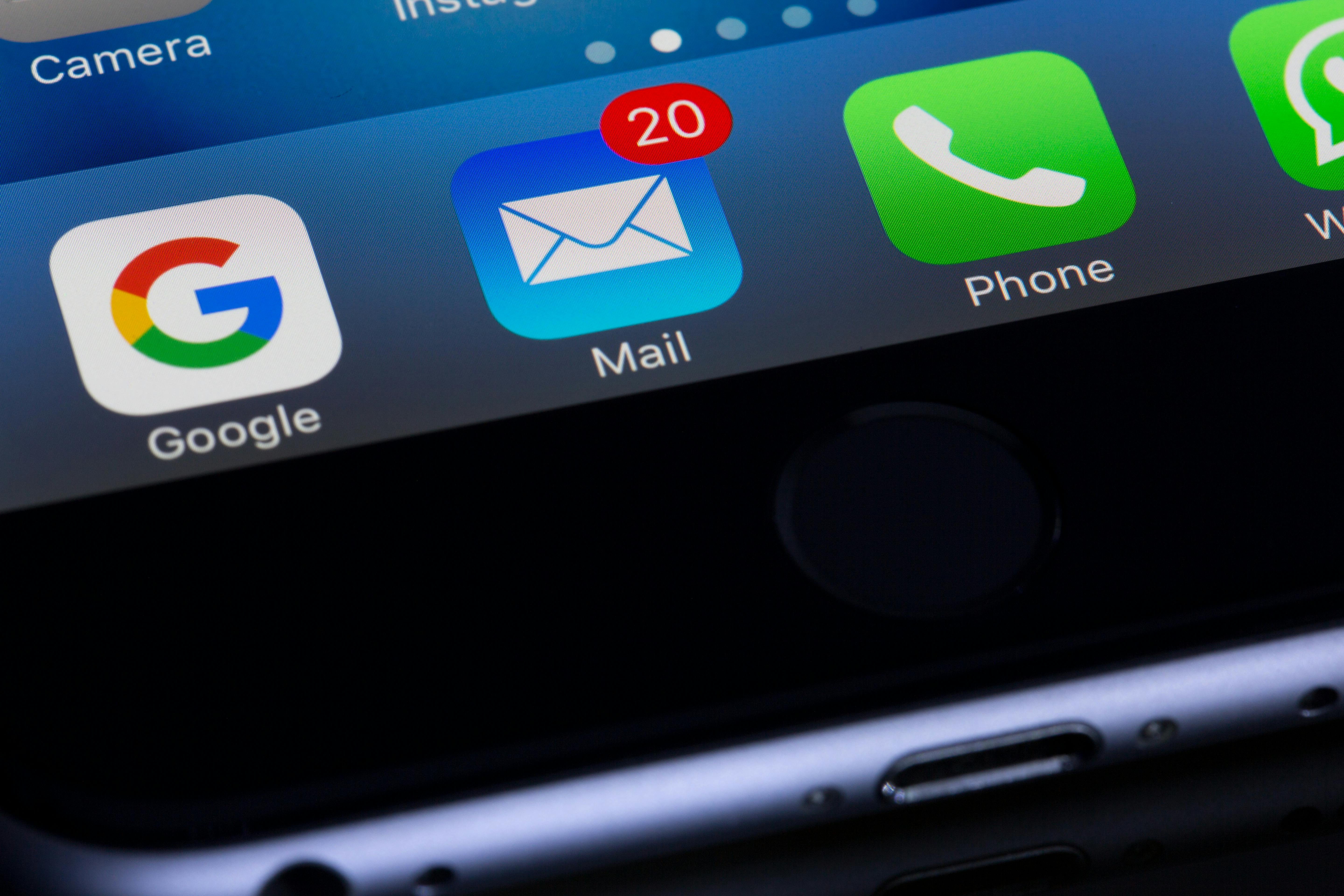Cold Email
Difference Between Cold Email and Warm Email Explained
Understand the key differences between cold and warm emails, their purposes, strategies, and how to use them effectively for stronger marketing outcomes.
Jun 18, 2025

Email marketing is a game-changer, but not all emails are created equal. Some are designed to spark new connections, while others nurture relationships you’ve already built. That’s where cold and warm emails come into play, each with its own unique purpose and approach. Knowing the difference isn’t just helpful, it’s essential for crafting a strategy that works.
Think about it. A cold email is like introducing yourself to someone new, while a warm email feels more like catching up with an old friend. Both can be incredibly effective, but only if you know when and how to use them. Whether you’re looking to expand your network or deepen existing connections, understanding these two types of emails can make all the difference.
Ready to jump into what sets them apart and how to use them to your advantage? Let’s break it down and help you make the most of your email outreach.
Key Differences Between a Cold Email and a Warm Email

Understanding the contrast between cold and warm emails is essential in refining your email marketing strategies. Each type serves distinct purposes, which directly influence their tone, audience, response rates, and the nature of the relationship you aim to build.
Tone and Personalisation
Cold emails focus on professionalism, aiming to showcase value and spark interest. Since you’re reaching out to individuals with no prior connection, the tone usually remains formal and concise. Including relevant personalisation, such as mentioning a recipient’s name, role, or company, creates relevance. For instance, referencing recent industry news can establish credibility.
Warm emails, but, take a friendly and conversational tone. These emails build on interactions you’ve had, incorporating personal elements like past conversations or shared experiences. You can mention specifics such as, "In our last discussion, you highlighted...," which makes the message feel tailored rather than generic. To optimise warm email content, referencing prior engagements like social media touchpoints or past purchases enhances resonance and trust.
Target Audience
Cold emails target new leads, focusing on individuals who match your ideal customer profile but are unfamiliar with your brand. These can include potential clients, business partners, or decision-makers at organisations you want to connect with. By carefully segmenting your audience, you guarantee messaging aligns with recipients' interests. For example, targeting B2B executives for high-value proposals can increase your chances of engagement.
Warm emails address contacts already familiar with your business or services. Examples include current clients, past customers, or those who have signed up for newsletters. Using tools like customer relationship management software or data-driven insights helps segment warm audiences for even more precise targeting.
Response Expectations
The response rates of cold emails tend to be lower due to recipients’ unfamiliarity with your brand. Industry studies show average response rates for cold emails hover around 1-5%. But, personalisation and value-driven messaging can boost these rates. For example, clearly stating a unique selling proposition (USP) or offering helpful resources can increase the chances of engagement.
Warm emails enjoy higher response rates, typically ranging between 10-30%. Recipients already have a reason to trust your communication, making it easier to elicit replies. Including call-to-actions (CTAs) that encourage further involvement, such as scheduling a consultation or redeeming a personalised offer, can maximise outcomes.
Relationship Status
Cold emails are ideal for initiating relationships. Imagine reaching out to a company CEO or marketing lead for collaboration, it’s your entryway to open new opportunities. Focus on creating a memorable first impression by adding social proof or testimonials to build credibility quickly. At Growleady, cold outreach strategies emphasise this approach, prioritising targeted campaigns that turn cold leads into business growth.
Warm emails strengthen pre-existing relationships. Whether you're upselling to repeat customers or re-engaging dormant clients, warm emails provide a chance to deepen rapport and drive loyalty. Citing past interactions, such as a useful product recommendation you shared, enriches the connection and guides your audience through the sales funnel.
Adapting your strategy to the specific context of each email type amplifies your reach and influence. Both cold and warm emails are invaluable tools when wielded effectively, knowing when and how to use them is key to marketing success.
When to Use Cold Emails vs Warm Emails

Understanding when to use cold or warm emails can significantly improve your marketing outcomes. Each approach caters to distinct scenarios and objectives, and aligning your strategy with these differences ensures maximum efficiency.
Cold Emails for Outreach and Networking
Cold emails shine in scenarios where introducing yourself or your business to new prospects is essential. These emails target individuals with no prior connection to your brand. Whether you're a B2B marketer, sales professional, or start-up founder, cold emails are ideal for lead generation, expanding your client base, or entering untapped markets.
To craft effective cold emails, focus on personalisation to establish relevance. Use data-driven insights to create tailored messages addressing each recipient's pain points. For instance, if you're offering a solution for inventory management, highlight how your service can reduce logistics inefficiencies. The tone should remain professional and concise, emphasising the potential value for the recipient. Including a clear call-to-action (e.g., scheduling a quick call or reviewing a brochure) directs your audience towards the next step.
Timing and follow-ups are equally essential. Avoid sending emails on weekends or national holidays, as engagement can drop. Implementing tools like email automation platforms or services can streamline your outreach efforts, ensuring messages are well-targeted and expertly timed. Also, maintain compliance with email regulations by obtaining consent wherever applicable.
Warm Emails for Building Relationships
Warm emails are your go-to for bolstering existing relationships or engaging with prospects who've already interacted with your brand. Scenarios include reaching out to previous clients for upselling, engaging subscribers with tailored content offers, or following up on recent networking exchanges.
Personalisation in warm emails goes beyond addressing someone's name, it involves referencing prior interactions or demonstrating an understanding of their preferences. For example, a warm email to a newsletter subscriber can offer a free e-book based on articles they've clicked on. Keeping the tone friendly and conversational encourages stronger connections, making recipients feel valued.
Avoid sending generic content, as warm emails thrive on specific context. Leverage CRM tools to track past interactions, enabling you to segment your audience meaningfully. Highlight value in your messaging, or instance, a free consultation may work well for a prospect evaluating your service.
Warm emails can also encourage dormant leads to re-engage. A simple "We’ve noticed you haven’t checked out our updates in a while, here’s something you might find useful" along with a relevant link can reignite interest. Timing for warm emails is flexible but aligning them with recent activities, like post-event follow-ups or recent purchases, yields better results.
Tips for Writing Effective Cold and Warm Emails
Approaching cold and warm emails with the correct techniques can enhance your outreach efforts and generate meaningful responses. Tailoring your approach for each type of email ensures you connect with recipients in a way that resonates. Here's how to make your cold and warm emails truly engaging.
Crafting Compelling Cold Emails
Focus on Clarity: Structure your email with a clear subject line and a concise message. Mention the purpose of your outreach early, ensuring the recipient understands the value you bring. For instance, if you're targeting B2B sales, emphasise how your solution addresses a specific pain point.
Personalise with Precision: Avoid generic introductions. Research your prospects on platforms like LinkedIn or their professional websites. Use details such as their role, company, or recent achievements to demonstrate that your outreach is thoughtful, not spammy.
Include a Strong Call-to-Action: End your email with a straightforward call-to-action (CTA). Whether it’s scheduling a brief call or downloading a resource, guarantee the next step is easy. For example, "Would you be open to a 15-minute call this Friday to discuss this further?" works well without overwhelming the prospect.
Follow Up Strategically: Many cold emails go unanswered initially. Sending follow-up messages 2-5 days apart can increase response rates significantly. Keep follow-ups brief and polite, reminding the recipient of the initial message.
Personalising Warm Emails for Better Engagement
Reference Past Interactions: Warm emails thrive on existing relationships. Mention specifics, like a prior meeting, email exchange, or shared connection. For instance, “I enjoyed our chat at last week’s event” immediately signals familiarity.
Leverage Previous Engagements: Use data from tools like CRM platforms to identify how a recipient has interacted with your brand. Has someone downloaded your eBook or clicked on your newsletter? Mentioning such details makes your email more relevant.
Adopt a Conversational Tone: Warm emails favour a personable approach. Write as though you're speaking to an acquaintance, using a friendly yet professional tone. For example, “I wanted to check if you’re still interested in exploring how we can optimise your team’s workflow.”
Offer Value with Relevance: Share updates, insights, or content that aligns with the recipient’s interests.
By integrating these practices into your cold and warm emails, you set a strong foundation for meaningful connections and effective lead generation. From crafting a compelling introduction to offering tailored solutions, every step can drive your marketing objectives forward.
Conclusion
Understanding the difference between cold and warm emails is key to crafting a successful email marketing strategy. Each serves a distinct purpose and requires a tailored approach to maximise its impact. By leveraging the strengths of both, you can effectively reach new prospects and nurture existing relationships.
Focus on personalisation, timing, and clear messaging to guarantee your emails resonate with their intended audience. Whether you're building connections through cold emails or strengthening them with warm ones, a strategic approach can help you achieve better engagement and drive meaningful results.
Frequently Asked Questions
What is the average response rate for cold emails?
Response rates for cold emails typically range between 1-5%, but effective personalisation and clear value propositions can help improve this rate.
How can cold emails be more effective?
Cold emails should be personalised, concise, and include a strong call-to-action. Research, timing, and strategic follow-ups also improve their effectiveness.
How can warm emails boost engagement?
Referencing past interactions, including relevant personalisation, offering value, and using a conversational tone make warm emails more engaging and effective.
Are cold emails legal in the UK?
Yes, cold emails are legal in the UK, provided they follow GDPR regulations, such as obtaining necessary consent or a legitimate interest for contacting recipients.
Should cold and warm emails be part of the same strategy?
Yes, both cold and warm emails are essential for successful outreach. Cold emails initiate new relationships, while warm emails nurture and strengthen existing ones.

